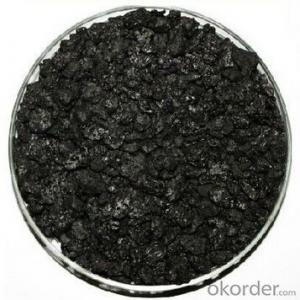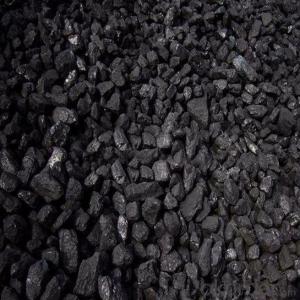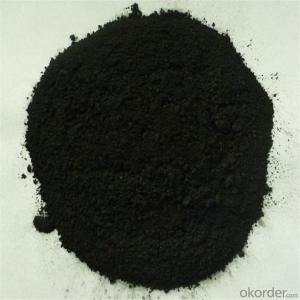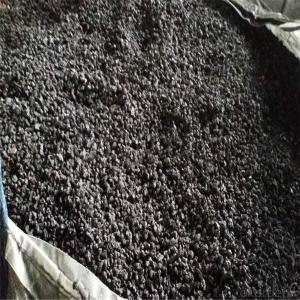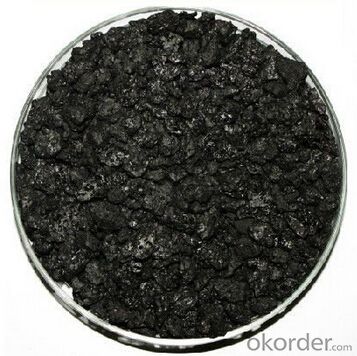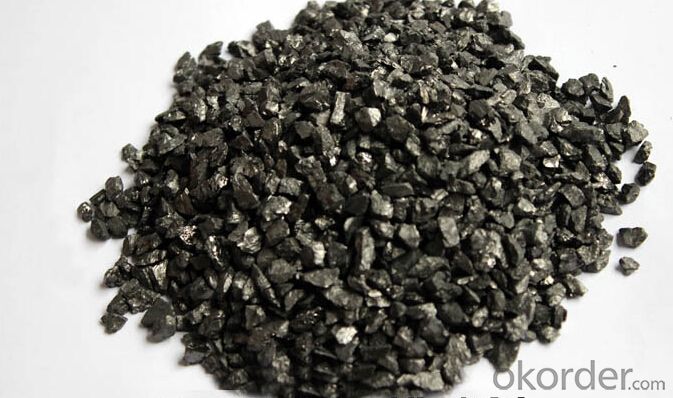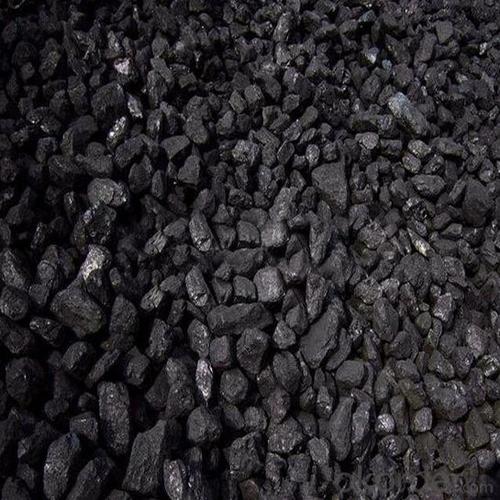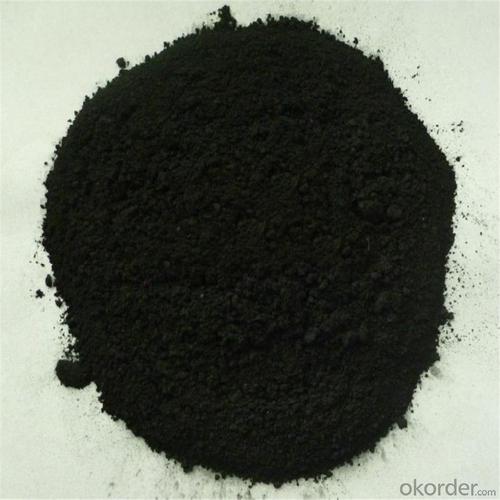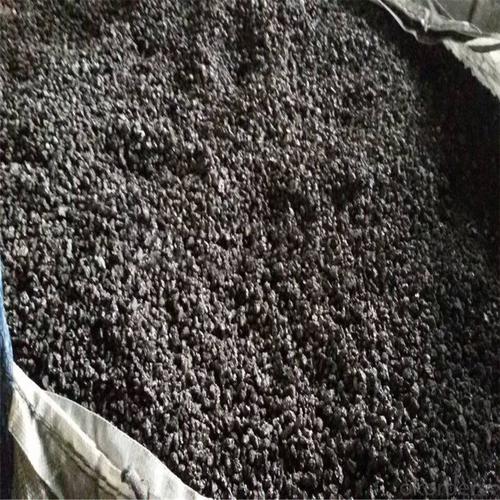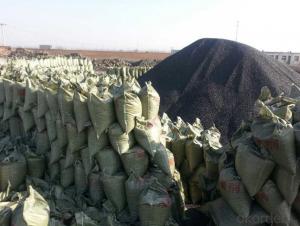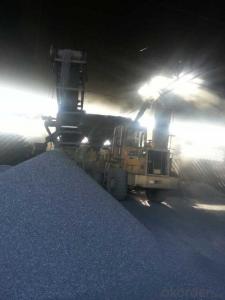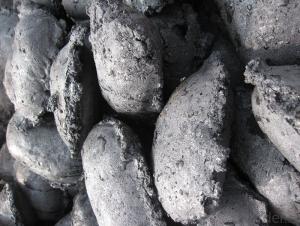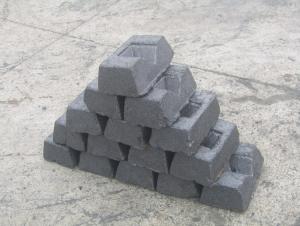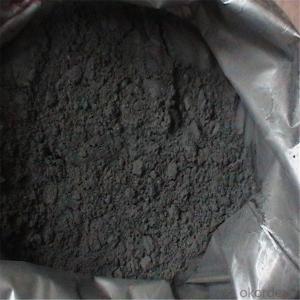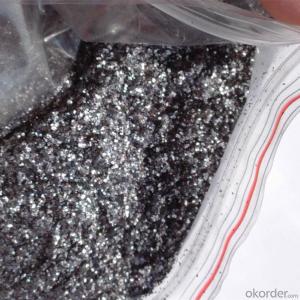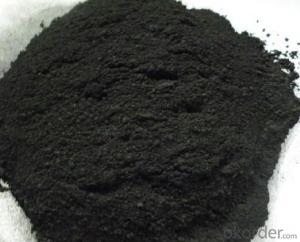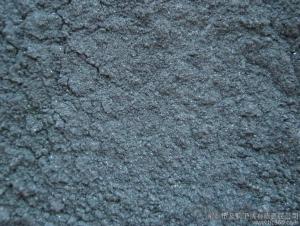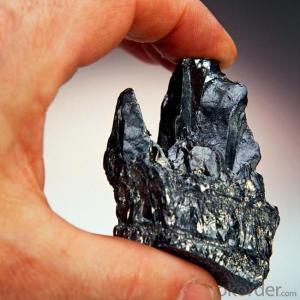natural amorphous graphite recarburizer graphite crystalline particle
- Loading Port:
- Dalian
- Payment Terms:
- TT OR LC
- Min Order Qty:
- 10 m.t
- Supply Capability:
- 500000 m.t/month
OKorder Service Pledge
OKorder Financial Service
You Might Also Like
Specifications of Carbon Raiser:
Carbon raiser:
- F.C is 90-95% min
- 6-10mm,sulfur0.2% min
- Be made of Ningxia anthracite
- High absorptivity
Quick Details:
Place of Origin: Dalian China (Mainland) | Brand Name: ShengSa | Model Number: SSGCA |
Application: Foundry;Metallurgy | Dimensions: High-carbon | Chemical Composition: C ; S ; V ; ASH |
C Content (%): 93%min | S Content (%): 0.3%max | Ash Content (%): 6%max |
Vol . Matter: 1.5%max | Moisture content: 0.8%max | Size: as per customer's requirement |
Color: Black |
Packaging & Delivery:
Packaging Detail: | a.1 mt super bags. b.1 mt super bags on pallets. c.25kgs small bags on 1 mt super bags. d.25kgs small bags on 1 mt super bags on pallets. e.as per customers' requirement. |
Delivery Detail: | within 25 days against the down payment |
Gas Calcined Anthracite/GCA
Fixed carbon | 95%min |
Ash content | 4%max |
Vol . Matter | 1.2%max |
Sulphur content | 0.25%max |
Moisture content | 0.5%max |
Size | As per customers' requirement |
packing | 25kg paper bag on the pallet or 10kg paper bag shrieked wrapped on the pallet or 1MT big bag or other packing as required |
delivery time | 20days or depends on the order quantity |
Supply ability | 8000 Metric Ton/Metric Tons / Month |
Payment terms | L/C at sight or T/T |
Size: 1-4mm, 1-5mm, 3-8mm, 8-20mm (as per customers’ requirement)
Usage: Gas Calcined Anthracite/GCA is carbon raiser, widely used in steel-making, metallurgical
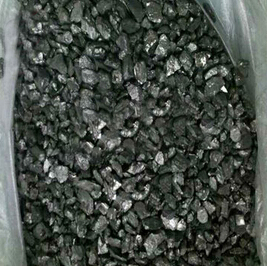
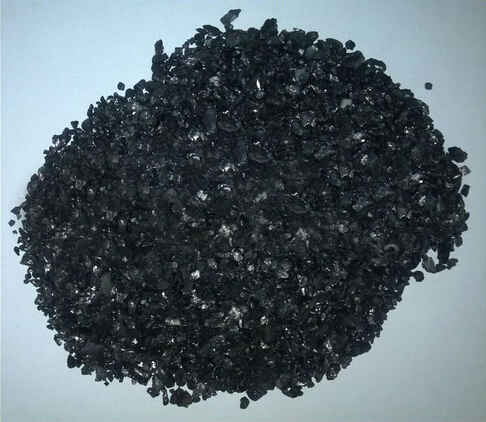
- Q: What are carbon credits and how do they work?
- Reducing greenhouse gas emissions through a market-based approach is what carbon credits are all about. The idea is to assign a value to the removal or reduction of one metric ton of carbon dioxide or its equivalent (CO2e) from the atmosphere. These credits represent the right to emit a specific amount of greenhouse gases and can be traded or sold on the carbon market. The main purpose of carbon credits is to create motivation for companies, organizations, or individuals to decrease their emissions. By establishing a price for carbon emissions, it encourages businesses to invest in cleaner technologies and practices to offset their carbon footprint. This ultimately leads to a decrease in overall greenhouse gas emissions, which contributes to the global fight against climate change. To acquire carbon credits, organizations undertake projects that reduce or eliminate greenhouse gas emissions. These projects can involve installing renewable energy sources, improving energy efficiency, planting trees, or investing in clean development mechanisms in developing nations. Independent third parties evaluate and verify each project to ensure its legitimacy and actual reduction in emissions. Once a project is approved and verified, it is given a specific number of carbon credits based on the amount of emissions it has reduced or eliminated. These credits can then be sold on the carbon market to companies or individuals seeking to offset their own emissions. Buyers can use these credits to compensate for their own emissions, effectively neutralizing their carbon footprint. The carbon market facilitates the buying and selling of carbon credits, providing a flexible and efficient approach to addressing climate change. The price of carbon credits can vary depending on supply and demand dynamics, as well as the strictness of emission reduction targets set by governments or global agreements. Overall, carbon credits are crucial in incentivizing emission reduction actions and promoting sustainable practices. They offer a financial mechanism for businesses to invest in cleaner technologies while making a positive contribution to global efforts in tackling climate change.
- Q: What is carbon neutral shipping?
- Carbon neutral shipping refers to a method of transportation that offsets or eliminates the greenhouse gas emissions produced during the shipping process. This can be achieved through various measures like using renewable energy sources, energy-efficient technologies, or purchasing carbon credits to compensate for the emissions. The goal is to balance out the amount of carbon dioxide released into the atmosphere, making the shipping process environmentally sustainable.
- Q: How are carbon nanomaterials used in electronics?
- Due to their unique properties and versatility, carbon nanomaterials find widespread use in the field of electronics. A common application of these materials is in the creation of highly efficient and flexible conductive materials. Both carbon nanotubes (CNTs) and graphene, which fall under the category of carbon nanomaterials, possess remarkable electrical conductivity, making them ideal for the production of conductive components in electronic devices. CNTs are cylindrical structures comprised of rolled-up graphene sheets. They can be utilized as interconnects in integrated circuits, enhancing performance by reducing resistance and promoting heat dissipation. Furthermore, CNTs can be employed in transistors, facilitating faster and more efficient switching due to their high electron mobility. Their small size and flexibility render them suitable for the construction of transparent conductive films used in touchscreens and flexible electronics. On the other hand, graphene is a two-dimensional sheet composed of carbon atoms arranged in a hexagonal lattice. It is renowned for its exceptional electrical conductivity, high electron mobility, and excellent thermal conductivity. Materials based on graphene can function as electrodes in batteries and supercapacitors, thereby enhancing their energy storage capacity. Additionally, graphene transistors possess the potential to replace traditional silicon-based transistors, resulting in faster and more energy-efficient electronic devices. Furthermore, carbon nanomaterials, particularly CNTs, exhibit promise in the realm of nanoelectromechanical systems (NEMS). NEMS devices are exceedingly small and sensitive, enabling applications such as sensors, actuators, and resonators. CNT-based NEMS devices have displayed exceptional sensitivity and responsiveness, making them suitable for various sensing applications, including pressure, gas, and biological sensing. In conclusion, carbon nanomaterials play a vital role in the field of electronics by offering highly conductive and versatile materials for different components and applications. Their unique properties, such as excellent electrical and thermal conductivity, make them ideal for the production of faster, more efficient, and flexible electronic devices. As research and development in this field continue to advance, carbon nanomaterials are poised to revolutionize the electronics industry.
- Q: What are the different types of carbon-based polymers?
- There are several different types of carbon-based polymers, including polyethylene, polypropylene, polystyrene, polyvinyl chloride (PVC), and polyurethane.
- Q: What are the consequences of increased carbon emissions on vulnerable communities?
- Vulnerable communities bear the brunt of severe consequences caused by the increase in carbon emissions. To begin with, these communities lack the necessary resources and infrastructure to adapt to and alleviate the impacts of climate change. The contribution of carbon emissions to global warming makes it more likely for these communities to experience extreme weather events, such as hurricanes, floods, and heatwaves. Consequently, displacement, loss of homes, and even loss of lives disproportionately affect those who are already marginalized. Moreover, the rise in carbon emissions leads to air pollution, which poses significant health risks to vulnerable communities. Inhabitants of low-income areas often reside in close proximity to industrial plants or highways with high emission levels, increasing their vulnerability to respiratory diseases, cardiovascular problems, and other health issues. This is particularly true for children, the elderly, and individuals with pre-existing health conditions. The consequences of increased carbon emissions also extend to food security. Climate change disrupts agriculture and alters the timing of growing seasons, resulting in reduced crop yields and food shortages. Vulnerable communities heavily dependent on subsistence farming or residing in areas prone to droughts or floods are at risk of malnutrition and hunger. This further aggravates existing inequalities and can lead to social unrest and economic instability. Furthermore, vulnerable communities often rely on natural resources, such as fishing, forestry, or tourism, for their livelihoods. The negative impacts of carbon emissions, such as ocean acidification and coral bleaching, jeopardize these industries, leading to job losses and economic decline. This perpetuates the cycle of poverty and socio-economic vulnerability. In conclusion, increased carbon emissions disproportionately harm vulnerable communities by exacerbating existing inequalities and intensifying the challenges they face. It is crucial to address these consequences through climate mitigation efforts, adaptation strategies, and support for sustainable development.
- Q: What's the difference between blue and red Panasonic batteries (carbon)?
- Blue is leak, proof, general, Purpose, general use battery (leak proof)Red is the long life long life battery (suitable for watches and clocks and other small power appliances)And heavy duty green seems to be good for high power appliances, such as toy cars
- Q: How can carbon capture and storage be implemented?
- CCS technology, which captures and stores carbon dioxide emissions from industrial processes, is crucial for preventing their release into the atmosphere. The implementation of CCS involves several key steps. First and foremost, CO2 emissions are captured from power plants, factories, and other industrial sources using different methods such as pre-combustion capture, post-combustion capture, and oxy-fuel combustion. Pre-combustion capture involves converting fossil fuels into a hydrogen and CO2 mixture, with the latter being separated and stored. Post-combustion capture removes CO2 from the flue gases after combustion. Oxy-fuel combustion, on the other hand, burns fossil fuels in pure oxygen, resulting in a flue gas that is predominantly CO2. After the capture process, the second step is transportation. The captured CO2 must be transported from the capture site to a storage site. This can be accomplished through pipelines, ships, or trucks, depending on the distance and volume of CO2. Pipelines are the most commonly used method, particularly for large-scale projects, due to their cost-effectiveness and efficiency. The third step involves storage, which entails injecting the captured CO2 deep underground into geological formations for long-term storage. The most suitable storage sites include depleted oil and gas fields, saline aquifers, and deep coal seams. These sites have the capacity to securely store significant amounts of CO2 for hundreds or even thousands of years. Monitoring and verification are crucial for ensuring the safety and effectiveness of CCS. Continuous monitoring is necessary to detect any potential leaks or seismic activities that could compromise the integrity of the storage site. Verification activities involve assessing the long-term storage of CO2 and ensuring compliance with regulations and standards. The successful implementation of CCS also requires policy support and financial incentives. Governments can provide regulatory frameworks, tax incentives, and funding to encourage the adoption of CCS technologies. International cooperation and collaboration are also vital, as CCS can be a global solution to mitigate climate change. In conclusion, the implementation of carbon capture and storage involves capturing, transporting, injecting, and monitoring CO2 emissions. It necessitates various technologies, infrastructure, and policy support for widespread adoption. By effectively implementing CCS, we can make significant reductions in greenhouse gas emissions and combat climate change.
- Q: What is carbon neutral energy?
- Energy sources that do not release carbon dioxide (CO2) into the atmosphere when used are known as carbon neutral energy. The concept aims to minimize the negative impact of energy production on the environment and climate change. Achieving carbon neutral energy is possible through various methods, including the use of renewable energy sources like solar, wind, hydro, and geothermal power. These sources do not emit CO2 during operation. Carbon neutral energy can also be obtained by combining fossil fuels with carbon capture and storage (CCS) technologies. This process involves capturing and storing the CO2 emitted during combustion underground, preventing it from entering the atmosphere. The objective of carbon neutral energy is to reduce greenhouse gas emissions and mitigate the effects of climate change, making it an essential step towards a sustainable and cleaner future.
- Q: Can carbon 14 identify the age of porcelain?
- You can use the theory, but the carbon fourteen method is mainly used to identification of ancient cultural relics, generally refers to the more distant, for modern artifacts, fourteen of the carbon method is difficult to get the exact time, China mainly appeared in the past one thousand years, generally not to use carbon fourteen dating method.
- Q: How is carbon used in the production of activated carbon filters?
- Activated carbon filters are widely used in various industries and applications, such as water and air purification, gas masks, and even in the production of certain chemicals. In the production of activated carbon filters, carbon plays a crucial role in their effectiveness. Activated carbon, also known as activated charcoal, is a highly porous form of carbon that has a large surface area. This porous structure is achieved through a process called activation, which involves heating carbonaceous materials, such as wood, coal, or coconut shells, at high temperatures in the presence of steam or certain chemicals. The activation process creates tiny pores and increases the surface area of the carbon, allowing it to effectively trap and remove impurities from gases or liquids. These impurities, including organic compounds, volatile organic compounds (VOCs), and certain heavy metals, are attracted to the surface of the activated carbon due to its high adsorption capacity. In the production of activated carbon filters, the activated carbon is typically formed into a granular or powdered form and then packed into a filter medium, such as a cartridge or a mesh. The filter medium acts as a support structure for the activated carbon, allowing the air or water to flow through while capturing and adsorbing the impurities. The activated carbon filters can effectively remove a wide range of contaminants, including chlorine, volatile organic compounds (VOCs), odors, and certain heavy metals. This makes them highly efficient in improving the quality of water and air by reducing pollutants and enhancing odor control. Moreover, the versatility of activated carbon allows for customization depending on the specific application. For example, activated carbon can be impregnated with certain chemicals to enhance its adsorption capacity for specific contaminants, or it can be specially treated to target certain pollutants, such as mercury or arsenic. In summary, carbon is used in the production of activated carbon filters due to its highly porous structure and excellent adsorption properties. These filters are crucial in various industries and applications, effectively removing impurities from water and air, improving their quality, and enhancing overall environmental and human health.
Send your message to us
natural amorphous graphite recarburizer graphite crystalline particle
- Loading Port:
- Dalian
- Payment Terms:
- TT OR LC
- Min Order Qty:
- 10 m.t
- Supply Capability:
- 500000 m.t/month
OKorder Service Pledge
OKorder Financial Service
Similar products
Hot products
Hot Searches
Related keywords
